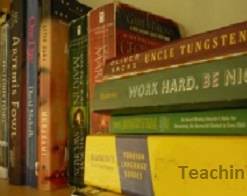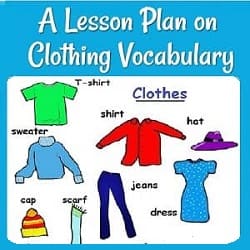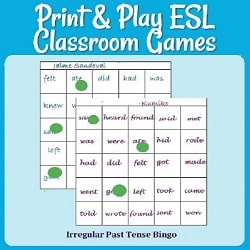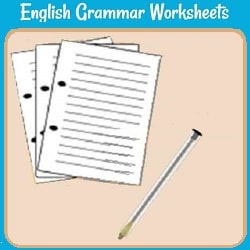Planning ESL
Lessons:
the Key to Great Classes
Good planning is essential for productive lessons. When planning ESL lessons, you need an overall idea of your students’ level(s) and what they want and need to learn during the class (the curriculum.) Often this will be given to you by your school.
Beginning-of-Class Planning
If the school has not done assessment testing (or you need more information on your students’ levels), you can do informal assessments in class. (Give a quick written assessment or just ask a few questions and note how well each student can answer.)
I also recommend a brief introductory questionnaire to learn students’ hopes for the class and their learning preferences.
For beginners you might want to accept answers in the students’ primary language if you understand it (or can get help to read and record the results.)
For intermediate students or above this questionnaire can be included as part of an introductory lesson.
For example, these questions could be part of a getting-to-know-you partner interview. Students interview each other with simple questions you supply about their interests and backgrounds. Each then introduces his partner to the class orally, and turns in the interview form so you can review the information.
(These forms will give you valuable information about the interviewer and interviewee's English skills as well as about their backgrounds, interests, and learning preferences if you plan the questions well.)
Planning Individual ESL Lessons
In addition to a curriculum with an overall idea of what students need to learn and general lesson order (so each lesson can build on and review previous learning), you need to plan the course of each individual lesson.
It’s important to have a daily plan, with a rough idea of how much time to spend on each aspect, to ensure that students have enough time to practice and adapt the new words and concepts they are learning.
It’s also a good idea to have back-up resources and activities in case there are problems in the classroom.
These can range from power or equipment failure, unusual numbers absent, or unanticipated resistance-- if perhaps you unknowingly violated a cultural norm-- to students finishing faster than expected, finding the work too difficult, or being so confused by part of the lesson that you need to find another way to present it.
Always have a Plan B, even if it’s just changing lesson order (starting in on tomorrow’s lesson early or reviewing last week's lessons). Other options are using a video or song, reading, game, or fun activity that you keep in reserve.
Basic Lesson Order
- 1st some kind of review or warm-up to activate prior knowledge,
- an introduction to interest students in the topic,
- a brief presentation/demonstration by the teacher,with a few questions to check comprehension
- guided practice,
- communicative practice (in which students apply their newly learned vocabulary or grammar in a less controlled way, using it to express themselves on an appropriate topic or during an activity that allows lots of practice with it),
- some form of assessment or evaluation (often informal),
- and if possible an application activity for students to do out of class, using what they’ve learned.
Integrating Language Skills & Learning Preferences

Most ESL lessons (for literate students above the low beginning level) should integrate use of all four language skills (listening, speaking, reading, and writing) as we do in daily life, though many lessons will emphasize some more than others.
Normally a lesson will begin using mainly receptive skills (listening and reading), and then proceed to practicing with their equivalent productive skills (speaking and writing.)
Good lessons need to consider different learning preferences and styles as well (especially if you have any students with difficulties in certain areas). Some students learn better by watching or reading, some by listening, some by trying things out for themselves.
Students also vary in their needs for social support or for time to think things through before participating. Some learn better working independently, others with a partner, and others with a group.
It's worth noticing (or asking) which approaches work best for different students, even though you may not be able to accommodate them all in every lesson.
Try to present new materials in several modes: say it and write it on the board or overhead projector, pass out handouts, show pictures or realia, use gestures and demonstrations, have students repeat, tap out the rhythm of expressions, chant or sing along.
Most Important of All
Build opportunities for success, and for students to see progress, into every lesson.
The kinds of assessments you use (informal, quizzes, tests, portfolio, etc.) may be set by your school, but they are also valuable for you, to see whether most students are actually learning what you planned with a lesson, and for students to recognize what they have learned and what they need to work on.
Make the classroom a welcoming, friendly place, where students feel free to participate and make mistakes, help each other, and have fun together. (Stress actually reduces the ability to learn, while interest and motivation make learning easier.)
Games and other activities aren’t just for a break, but serve very valuable purposes in language learning. See the page on ESL games for more explanation.
This is a very brief introduction to planning ESL lessons. You can see examples of lessons following these guidelines in ESL Lesson Plans for Teachers below.
To learn more about lesson planning and classroom management skills see English Club's Teacher Guide or the books and sites mentioned in ESL Teaching Resources.
Related Pages to Check:
Adult students really enjoy this lesson on clothing vocabulary, preparing, then taking turns ‘shopping’ at their classmates’ stores.
Games are so useful in ESL classes! Get free printable puzzles, vocabulary matching games, and inexpensive packets of games to practice irregular verbs.
Pdfs with grammar games & exercises for verb tenses (especially irregular past tense verbs), practice with sentence structure, etc.
Home> ESL Lesson Plans for Teachers > Planning ESL Lessons.
Didn't find what you
needed? Explain what you want in the search box below.
(For example, cognates, past tense practice, or 'get along with.') Click to see the related pages on EnglishHints.
| site search by freefind | advanced |









